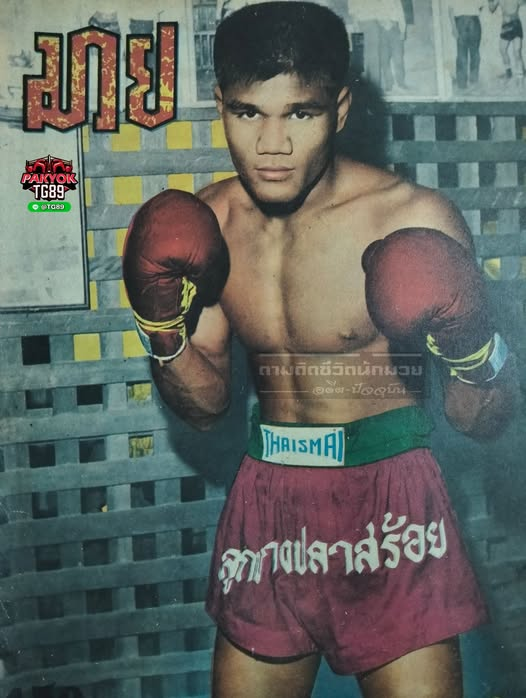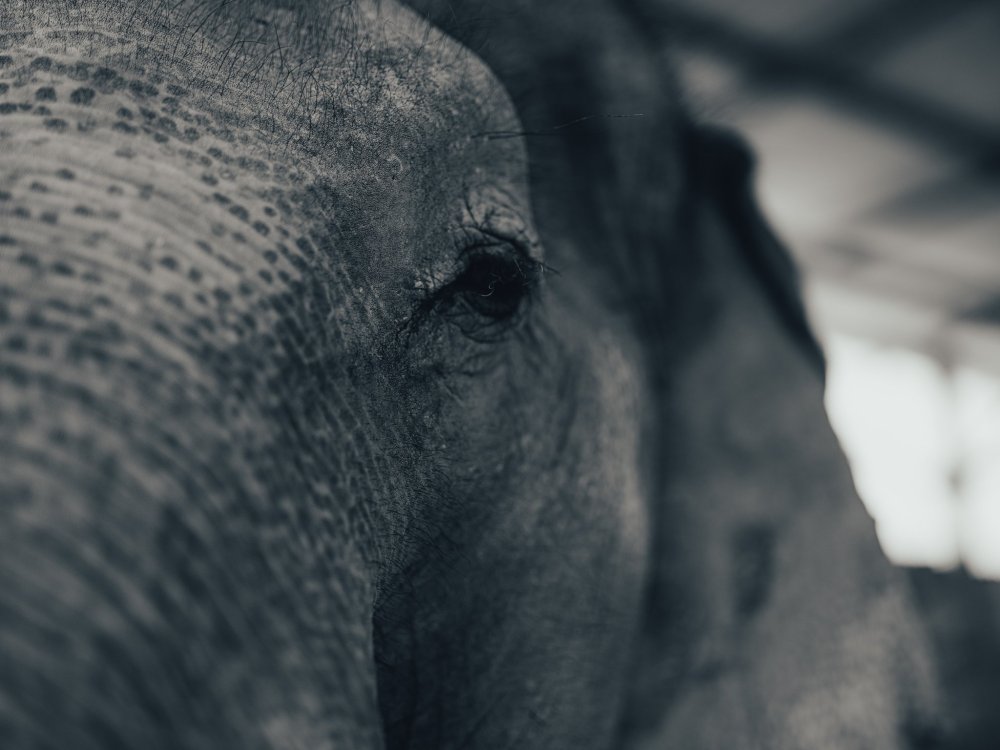All Activity
- Past hour
-
A lot of these thoughts of several years came together for me in side conversation with Arm of Muay Thai Testament Instagram who is looking to perhaps put together a project around Muay Dek fighters of today. I asked him if he could link some present Muay Dek fighters on the rise. This is what he wrote, posted with permission, posted in a series of replies: Strong Muay Dek Fighters Today 1. I was rewatching one kid this morning, as I do with all the kid fights that gets good reception, and this kid from some gym I've never heard of is so good femue. I think the gym is a new addition to Petchyindee's roster now. His name is Kaona Jor. Nopparat The part about Femue being easier to execute at lower weight is so true. Regarding the examples, I only really know the Petchyindee ones but here goes. In no particular order: 1. I was rewatching one kid this morning, as I do with all the kid fights that gets good reception, and this kid from some gym I've never heard of is so good femue. I think the gym is a new addition to Petchyindee's roster now. His name is Kaona Jor. Nopparat
- Today
-
GwenSkinner joined the community
-
above, festival fight in Pattaya Just some thoughts and observations on the overall state of Thailand's Muay Thai. Not an expert opinion, just an informed perspective. The title of this piece may sound absurd, or maybe for some just an exaggeration, but there is among some long time, passionate Westerners who have watched a lot of Muay Thai in Thailand the sense that the only Muay Thai worth watching in Thailand now, in terms of actual skill, is Muay Dek, the Muay Thai of Thai youth. This piece about why that may be so. There is a sense that Muay Thai has been stretched now in two directions. You have Bangkok stadia, gambling driven traditional Muay Thai, supposedly the acme of the country's traditional talent, and you have Entertainment Muay Thai (with various versions of itself), a Muay Thai that is bent towards - and in many cases just FOR - the foreigner. If I was to really generalize between the two, one line of Muay Thai heads toward more "technical" point fighting and fight management (trad stadium Muay Thai), fights where fighters and corners are always responding to shifting gambling odds, and on the other hand a Muay Thai (in the extreme case of ONE) which is all about combos, aggression and offensive risk taking, emphasizing trades in the pocket and knockouts. The problem is, neither trajectory is very skilled (at least in the historical sense of Thailand's greatly skilled fighters). Muay Thai has become increasingly deskilled, along these two developing branches. And, if you mostly watch one of the two, you might not have noticed the deskilled aspects, because this is just the "new normal", and competition always produces winners who seem in comparison to others, quite skilled. It's only when you take the wider view, not only of the history and greatness of the sport, but also of the present state of Muay Thai itself, importantly including Muay Dek, do you see the drop in skill in adult fighting...as each promotional style squeezes out certain qualities from their fighters, cutting off their full, expressive development. Why Are the Muay Dek Fighters the Best Muay Thai Fighters in Thailand? If you just watch a few fights, and you have an eye for it, you'll see it. In a word, freedom. In another word, expressiveness. And still an third, sanae (charm, charisma). The Muay Thai of the Golden Age (1980s-1997) was filled with highly skilled, very well-rounded, but importantly very expressive fighters, fighters who fought with experimentation who were constantly adjusting to their opponent, drawing on styles and tactics that could in shifts change the outcomes of fights. And in fighting in that way that exuded personality, uniqueness and charm...aura. Much of this quality, and flexibility is gone from Thailand's Muay Thai, but in today's Muay Dek some of it is really still there. Its only when these fighters get to a certain age...maybe 15-16, that it starts to become squeezed out. In the Muay Dek even of today you get fighters who are regulating their energies with great subtitle, not swinging between overt passivity or over-aggression, fighters engage more continuously in the classic style, with fewer ref breaks, less stalling, fighters drawing out extended phrasing and highly technical defensive stretches that endure. A greater variety of weapons, and even transitions between fighting styles or a shifting of tactics, to solve what is happening in the fight, a kind of cerebral aesthetic that older fighters seem to have lost the capacity for. At the highest levels of Muay Dek youth fighting you see dimensionality...and personality. There is much less nibbling at leads. Instead one sees that leads are vied for more or less continually, and expanded when achieved, without devolving into hyper-aggressive mashing. I'm going to leave Entertainment Muay Thai to the side for now, especially ONE which is its own particular excessive exaggeration, mostly because its kind of obvious how promotional hype, booking dynamics, rule-sets and bonuses shape fighters to fight in a certain more limited way. What many may not realize is that trad Muay Thai in the stadia also forces fighters to fight in a certain way, in many cases simplifying or pairing down what they had been capable of when developing as youths. I'm going to say "gambling" here, but gambling is not the boogieman monster that a lot of online commentary makes it out to be. Gambling in Muay Thai is essential to its form, in fact I don't think Thailand's Muay Thai would have reached the complexity of its art without ubiquitous gambling, all the way down to the 1,000s and 1,000s of villages and provincial fight cards, its ecosystem of fighting, which have gone on for maybe centuries. Some of the discussion of the importance of gambling I discuss speculatively here: above, festival fight in Buriram The problem isn't "gambling" per se, but rather that in the larger venues in Bangkok because of the changing (eroding) demographics of Muay Thai the shift of economic power to big gyms, and the dwindling talent pool, the powerful forces of gambling interests have lost proportion, and now have outsized impact. There are not enough counter-balancing forces to keep gambling's historically important role in Muay Thai's creativity, in check. These have worn away, leaving gambling as too prominent. But, I'm not talking about corruption here (which everyone loves to turn to with an infinite finger of blame). I'm actually talking about the way in which Muay Thai is traditionally fought with fighters responding in a live sense to the shifting odds of the audience. Online gambling has complicated this more human, social dimension of the sport, abstracting it to 1,000s or 10,000s of people of varying interests and even knowledge, on their mobile phones. The demographic of "who" gambles has changed, and increasingly people are gambling who have less knowledge about the sport. They'll place a bet on Muay Thai just as they'll place a bet on a football game. Again, let's bracket, let's put the online nature of gambling to the side, and just talk about the traditional relationship between live fighting and live in-person gambling in the stadia. The fighters are fighting TO the odds. The odds are the "score" of the fight, just like in basketball you could look up to a scoreboard and see the score of the game, in Muay Thai you can look to the odds and (roughly!) know the score of the fight. There may be distortion in the odds, whales and their factions of one sort of another may be putting their thumb on the scale, but there is a symbiotic discourse happening between live gambling and the fighters (and their corners). Some of this traditionally has produced great complexity of skills, the ability of fighters to not just "win" the fight in terms of points, but also manage the fight, in stretches, shaping narratives. But today, the exact opposite is happening. Gambling is deskilling traditional Muay Thai, in large part because the small gyms of Thailand - the gyms that actually grow all the fighters, feeding the talent of Bangkok - have been eroding. Not only have they been disappearing (there are far, far fewer of them), those that exist still have no political power in the socio-economics of the sport. When fighters of small gyms enter the gambling rings of Bangkok, not only are they doing so on a very fragile line of income, often losing money to even bring their fighters down, they can no longer bet big on their fighters to supplement fight pay. Betting on your own fighter was once an entire secondary economy which grew small gyms and encouraged them to create superior talents. If you had a top fighter he could be a big earner not only for the gym, but also all the padmen krus in it, aside from fight pay. Because small gyms have lost power overall, political power, they have to live at the margins, which means their fighters have to fight extremely conservatively so as to not be blamed if their fighter loses. They need the backing of the social circles of gamblers. If you lost, it can't be because you took a risk. And because big gyms are going to win (force through political weight) close fights, small gyms have to practically walk on egg-shells in the way that their fighters fight. Generally: get a small lead...and once you have that lead protect it at all costs. Don't do anything risky to expand the lead. And, because small leads are easily lost, fights often turn into a series of nibblings, with both fighters protecting their tiny leads, back and forth. They aren't trying to win, they are trying not to lose. This form of fighting has even transmitted itself to big gyms, is the new traditional form of fighting. Don't risk blame. To give a small anecdotal example of how this deskilling works, I remember when a smallish gym was training a fighter, and in padwork the fighter switched to southpaw, just experimentally. No! The answer came back from the kru, and they related a story from the past when one of the gym's fighters had switched to southpaw in a fight and lost. The gamblers who bet on him were furious. He had "blown" the fight. The gym had lost face. From this single event, probably a fight not of much consequence, the gym now forbade switching. It could cost you a fight. An entire branch of Muay Thai (that of switching) was cut off from that gym's fighters...forever. Not only in terms of that technical branch of development, the whole spirit of experimentation and creativity was closed off. The goal was: get a lead...keep it. Don't develop a style that is complex, or varied. Don't do anything in a fight that IF you lose, the gamblers who backed you will blame you and the gym for. This is deskilling. one reason why Thai fighters have been the best in the world isn't just that they have trained and fought young. It's also that they have been at the apron of fights, watched the shape of the traditional aesthetic, socially absorbing a great deal of fight knowledge. At the rope, even as cornermen or impromtu coaches. Its not just the doing, its the participation in the Form of Life that is traditional Muay Thai, bringing a depth of IQ. As small gyms and kaimuay across the country lose power in Bangkok, social power, they have to exist in very narrow economic margins, which means that technique wise their fighters have to fight in very narrow lanes. The spontaneous and the creative is too risky, because gyms don't want to be blamed. Fighters cannot explore or develop new ways of winning fights. There is a secondary dimension in this, as the downfall of the Thai kaimuay is told, which is IF a small gym does produce a particularly strong talent, this talent will not become a resource for the gym, adding honors to the gym (championship belts, etc), growing the gym through his presence. Instead, if you produce a talent this talent will be ostensibly stolen from you. Not outright stolen, but you will be pressured to "sell" their contract to a big Bangkok gym. This pressure will usually come from the fighter's parents, who want success and fame for their son, and the esteem of a bigger name, and it will come from within the hierarchies of the sport. The sale will happen. Instead of a developed talent adding to the richness of a gym's culture and growing their talent own pool of younger fighters who want to share in the glow of gym success, instead you'll be financially compensated with a contract sale. Some money in the pocket, to the gym owner, but not the kind of verdant growth a talent would have brought in the past, something that would shine across all the krus and padmen, and younger fighters in the kaimuay. And, fighters now are being extracted from small gyms younger and younger. The comparison is fruit being picked from trees more and more less ripe. Not only are fighters in general entering the Bangkok stadia with far less experience and development in the past, fighters are also being swept up by big gyms at a much higher rate, at an earlier state of their development. The ecosystem of the small gym, 100,000s of them, is being starved out. And its that ecosystem that historically had produced so much of the foundational complexity that gave Bangkok fighting so much of its renown diversity. Fighters that entered Bangkok stadia used to be much more complex and experienced, and then once they got there the complexity and experience of that scene increased and amplified them, spurred them to greater growth. Now, its the opposite. Arriving in a Bangkok stable may very well nullify your potential. We might add to this that the large big name gym stables of Bangkok today, that have swept up much of Thailand's diminishing promising talent, concentrating it, have become more like holding houses of that talent, and fighter factories for promotions, and less like developmental houses as old Bangkok gyms like Muangsurin, Thanikul, Pinsinchai, Dejrat, Sor Ploenjit had been, promotion favorites which maintained not only a kaimuay developmental creativity, but also more lasting connection with provincial sources. Muay Dek and Facing Power So, the good news is, despite all these forces against creativity, against small gym development, Thailand is still producing very high level Thai fighters from youth. These fighters fight with complexity and freedom, full of sanae, technical excellence, narrative control, quite different than their older counterparts who have learned to strip away their individuality attempting to preserve leads in gambling's stadium Muay Thai. I'm not sure what to account for this other than to believe that Thailand in its heart still maintains the aesthetics and richness that created the acme of the sport in the Golden Age, these qualities haven't been stamped out yet...it is only when fighters get to a certain maturity, when they are fighting for gamblers without a lot of social power themselves, protecting tiny leads, that they lose these qualities. They become deskilled. There is another element to the mystery of why these Muay Dek fighters lose their skills when they age. Kru Gai at Silk tells Sylvie: It's easier to be femeu when everyone is low weight, and nobody has power. Muay Dek fighters develop all this complexity because there is no "power" consequence for their experimentation at low weights. And one can see how this makes a serious amount of intuitional sense. Gamblers today favor more "power" in Muay Thai, so femeu fighters enter contexts where suddenly there are consequences that limit what you can do. But, if you take a moment to think about it, femeu fighting youth of the Golden Age also once they hit a certain age encountered "power" in opponents. But, instead of losing their skill sets at maturity, they actually grew as fighters, became more complex, more creative, more effective...against power. Someone like Karuhat was fighting up two weight classes in the 1990s, a very femeu fighter, against very powerful opponents. It's can't be that encountering the maturation of "power" is the thing that is shutting down the development of the youth, who have already developed so much prior. In fact, there seems a rough parallel between artful youth fighters of the Golden Age and now. Both of them hit this "wall" at a certain age. But in the Golden Age this accelerated their growth, today it stunts it, and even regresses it. I suspect it has to do with the overall conservative form of stadium gambling Muay Thai, the entire incentive and punishment system that produces a lot of tiny-lead chasing...and this goes back to the dis-empowerment and erosion of the small gyms that feed the sport, developing the fighters. The best fighters in all of Thailand are the Muay Dek fighters. It is the closest thing to a natural lineage with the greatness of the past. But right now...there is no way forward for them. No way for them to allow their expressiveness of character and technique to expand and not be disciplined into submission, dulled. They have to face the trad conservative ecosystem, or have to turn to the hyper-aggression of entertainment promotions, each of which robs them of a vocabulary of control and expression.
-
darshk joined the community
- Yesterday
-
Here from Eugene Holland's new book, on Markets and Capitalism, talking about the capture and abstraction from artisanship. The "efficiency and increased output" of Bacon's concerns in a Muay Thai context is the efficiency and output of the generation of students/clients (consumers, customers) and of labor for Muay Thai promotions. It's about making the commodity cheaper and faster (deskilling), so that parts and inflection points in the process become replaceable - and therefore less expensive. This is how Thailand's Muay Thai is being harvested by technique, pushed into global, deskilled commercial production.
- Last week
-
Hexxx joined the community
-
NorbertoCannon27 joined the community
-
Finding a Bangkok Gym After 1-year hiatus
AandAinThailand replied to An-Idea65's topic in Gym Advice and Experiences
I'm not sure where Fani Peloumpi trains nowadays - might be that she still gives privates at MTA academy which is quite central. I would contact her on facebook, as we did. We enjoyed our privates with her. Luckily, in my experience in Thailand, the pads are held by Thai trainers who have control and no need to use strength to show off, so my main worry would be rather to avoid touristy gyms near where half the people training there are mainly concerned with getting the right shots for their social media. If you stay for one month, i would try out different gyms and see which fits best. Getting different experiences and approaches would be a plus, in my opinion, and Bangkok is like a candy store in that regard. Add to that a few privates e.g. with Namsaknoi, or any trainers at established gyms such as Sasiprapa, Petchyindee, Kaewsamrit, Eminent Air, Luktupfah. -
An-Idea65 started following Finding a Bangkok Gym After 1-year hiatus
-
I am going to Bangkok in a few weeks and plan to stay there for one month, working remotely. I'm coming off a 1-year hiatus and will need to slowly ramp up my training again, so looking for a place that I can pop into 2-3x per week to start, and then slowly progress. I am a casual student so don't think training camps are for me right now. I also want something in between traditional and Westernized - just a gym culture that is welcoming to intermediate women, and makes sure that egos are checked at the door (I've been to way too many gyms holding pads for large, powerful dudes with egos that went unchecked, which led to a lot of unnecessary injuries for me - part of why I took a hiatus). Given this, I wonder if taking just private classes is better, until I "sniff out" the vibes of the other students, before holding pads with them.. I've been looking through lists on here and quite frankly, overwhelmed by the choice. Budget-wise, id like to keep the privates down to less than 40/hr Anyone have recommendations?
-
Angel258 joined the community
- Earlier
-
Hey all, If I hit a heavy bag too hard low down alot or kick pads i'll get a pain in my shins, It dosn't swell up and I assume its just because they arent conditioned enough - however I've been doing muay thai for a good few months and i've taken a month break to heal but the same issue arrises after a couple sessions back to back. is there any proven conditioning techniques besides kicking the bags and pads, is the stick roll worth a try? Thanks
-
drsaumitraswellbabyclinic joined the community
-
Dr Buchun Mishra joined the community
-
huckle joined the community
-
clinchcultures joined the community
-
from my reddit share of the above graphic: This map provides a speculative zoomed-out view of how provincial village Muay Thai gambling markets, which were something like a Galapagos of localized market selections, connected up to some very large global trade influences in Siam and then Thailand. The great cultures of India and China (and others) were intimately connected to Siam through cosmopolitan centers (like Ayutthaya), and rural populations regularly (seasonally so) cycled through these city and town centers. You can read about the logic of local gambling markets and their (possible) creation of the Muay Thai aesthetics here. The idea in this graphic is to position those "islanded", somewhat isolated processes to the churn of population movement, and wider international trade. This is to say, Thailand's Muay Thai likely has long been at the shoreline of internationalism, but also has retained an isolated, generative rural "reserve" that anchored its identity and insulated it from change. This is leaving aside (due to space on the graphic, but also to emphasize what is often missed) the more common explanations of source and influence, the Khmer Empire (which was an Indianized culture), and the Burmese, Lao, etc. This is represented instead by the "permeable" boundaries arrows.
-
The facebook post says he fought for Rajadamnern Champion 147 pound title. One comment said he was Lumpinee champion, and my favorite comment says he was the man who read out the weights during morning weigh ins, when the commenter first started fighting at Lumpinee. This is Muay magazine, from the 70s, which the collection I've been able to get my hands on are only covers, no inside sheets. So I don't have access to an article that might cement this image, but I will ask a few sources to see what I can get.
-
Zooming out my kind of rough-sketch evolutionary dynamics of Siam/Thai Muay Thai, over the last maybe 500 years. One of the factors of Siam/Thailand is that land worked something like "sea". There was a LOT of it (much more than population which was sparse) and it was hard to traverse (other than waterways). This set up Galapagos-like islandings of local market dynamics, around festival fight rings. But, through seasonal population capture and relocation, and then corvee labor cycles, these festival islands were continually churned back toward city (trade) centers, and martial service (structuring)...which in turn was exposed to quite vast international influence/cross-pollination. You had flows of trade from across the civilized world, cosmopolitanism, martial service, and then constant cyclical return to village micro market ring dynamics, a return to Galapagos variability and selection creation.
-
Hi. We're having a discussion over on Wikipedia about the article of a certain Rabieb Sangnual who got silver at the 8th Asian games in the light middleweight class, and competed at the 1972 Olympic games. We don't have anything for this guy other than an entry in a list of people who competed at the Olympics and got medals in other events, which isn't enough for the article to be kept - for it to be kept we ideally need a biographical article, obituary or similar. A search has turned up this magazine cover (or it looks like a cover anyway, could be an inside spread, or even just a fan-made picture - it's certainly had a lot of water-marks added to it) on Facebook of a Muay Thai fighter who went by the name Khongdetnoi Lukbangplasoi. It looks like the same magazine as some of the pictures here. I think if we could find this magazine and show that this Muay Thai fighter is the same person as Rabieb Sangnaul (not just fans in a FB thread saying this, but evidence from a reliable source) then probably the article could be kept. Do you know who this fighter is? Was he Sangnaul? Do you know what magazine this is? When was it published? Sorry about all the questions, but this is an unfamiliar area for a lot of us, for sure most of us don't speak Thai (I don't anyway), and it would be great to have the benefit of your expertise.
-
As Thailand's Muay Thai more and more turns its face toward the World and the West increasingly those coming to Thailand to seek out, experience, train in, fight in, even commit to and honor authentic Muay Thai will have a hard time finding it. In this brief article I want to point out the two biggest areas of difficulty. Keep in mind, I'm writing this from the perspective of having witnessed my wife who has fought more times in Thailand than any non-Thai in history, coming up on 300 times, as a fighter who has steered as clear as possible from aspects of the sport which are arranged or made for you, and become perhaps the foremost documentarian of the sport and art. Everything I describe is from often repeated things we've encountered, found ourselves in, worked through, and what we've learned from the experiences of others. Importantly, pretty much everyone who has been in the country a long time has their own experience and understanding of authenticity, and this is just ours. Thai culture, and Muay Thai culture is also a very complex and woven thing, it is not homogeneous or made in one way, so these are benchmark ideas and there are many exceptions. Authenticity, that which is not made for us. 1. Increasingly Thailand's Muay Thai is made FOR you One of the first challenges is honestly that of recognition. Because Thailand is so culturally different, and Thailand gym training not that of than Western and international gyms, whatever you are experiencing is going to feel authentic. Its authenticity will come through in everything that is different. It must be authentic because I'm not used to this. And because we can only judge from our own experiences, and from what we see and read, this is difficult to overcome. After 3 months in the country you are going to feel like you have really penetrated to the heart of something really new. After a year, you really will feel like you know what's going on, and if you have gravitated toward "authenticity" you'll probably feel like you are in a pretty "real" place. My caution is: Nope. You probably don't realize how much of Muay Thai has been turned toward YOU. And if it wasn't turned towards you, you wouldn't be participating in it. This is going to sound harsh, but pretty much ALL Western/International Muay Thai experiences are something like an elephant ride. The elephant (Muay Thai) is very real, and there is great privilege and beauty in being on an elephant. You're touching a living, breathing, REAL elephant...but you are on an elephant ride, made FOR you. Now, there are all sorts of elephant rides. There is the one where they walk in a circle and you get off, and another where you bathe and then bareback like a "real mahout" would, and then maybe all the way up to 10 day safaris, trekking on elephant back (is there such a thing?). But it's still an elephant ride. You get in the ring, its real...even if its arranged for you, its intense and real. You hit the bag, you burn the kilometers in road work, its real. This isn't to say anything is inauthentic. All of Muay Thai in Thailand will change you. This is about reaching, as passionate people will, those aspects of the sport and art that are unique to Thailand itself, that may fall from view as Thailand turns its face toward you. The Rules, For You How do I mean this? The rules of the sport have been changed so that you (in a less skilled way) will win fights, or perform well in fights you might not otherwise in the traditional Thai version of the sport (there is a full spectrum of this, stretching from RWS entertainment Muay Thai to ONE smash and clash). This is a fairly recent transformation, covering perhaps the last 10 years. The sport itself has been altered for you...and, as it has been altered for you, this also has washed back onto trad Bangkok stadium Muay Thai, which has absorbed many of the entertainment qualities which are pervading social media and gambling sites. In some sense the "authentic" traditional Muay Thai of Thailand doesn't really exist in promotional fight form anywhere in the halo that tourist and adventure tourist has reached. It's just a question of degree. The issues and influences behind this in trad stadium Muay Thai are more complex than this, but it too has turned its face towards "the foreigner". Some of this is just what people like to call "progress" or "the force of the market place" or others might call the "deskilling of Capitalism", but just know that in the fights themselves, they are by degrees turned towards YOU. It really might only be in the festival fight circuits of the provinces where you will still will find the culture and aesthetics of the sport and art FOR Thais. To be sure in festival fights there can be matchups that favor a larger foreign student of a local gym, which has relationship ties with the local promoter, especially if there is no sidebet. But the EVENT isn't for you, designed around you, catering to you or people like you. You're the oddity, and the rulesets and aesthetics have been less altered if at all. The Training, For You On a deeper level, the training in gyms is also made FOR you. The traditional pedagogy of Muay Thai, the manner in which it was developed through youthful circuit sidebet fighting, the kaimuay culture of non-correction and group dynamic sharing of a grown aesthetic, has been seriously eroded, supplemented and sometimes just outright replaced. You are (likely) not learning in the manner of the Thais that produced such acute excellence so many decades ago. Yes, there will be obvious things like farang krus and padmen in some gyms (many of them quite devoted to Muay Thai, but not produced by the subculture), something that is increasing in the sport, but, subtly, even if your padman is Thai, he may not even be an experienced ex-fighter, as mid-so Thais are holding pads now in the growing commercialization. Muay Thai is experiencing a gentrification and an internationalization at the gym level. Beyond padmen, the very manner of instruction and fighter development will have been changed in some sense for you. For one, increasingly you'll notice "combo" training, memorized strike patterns, which is both a deskilling of the sport (making it easier to teach, replicate and export), but also is training that is geared towards the new Entertainment trade-in-the-pocket patterns and aesthetics, made for tourists and online fandom. The change in the rules of the sport over the last 7 years or so, also is reflected in a change in how the sport is actually taught...even in spaces that feel VERY Thai. The sport is bending to the "combo" because it is signature to Western and international fighting aesthetics, and it can be taught by less skilled/experienced coaches. Fighters did not train like that, nor did they fight like that. As the sport has become deskilled the combo has taken an increasingly important role. Added to this, gyms have had to accommodate the expectations of Westerners and other non-Thais, as the weakening of the sport economically has turned almost every gym in the tourism halo towards at least a hybrid relationship to tourism...it needs to give the Westerner something they recognize and expect...and, because tourists and adventure tourist come with all sorts of investments and motivations, on different timescales, a lower common denominator works itself into the equation. Group "classes", organized drilling of groups, increased conceptualization and rationalization of techniques involving verbal correction and demonstration, even foreign coaching, these are FOR YOU changes in the sport. Sometimes these trends and aspects will only be subtly present, sometimes they will characterize the entire process. This is an elephant ride. And often it is difficult to distinguish where the elephant ends and the ride begins. Even "Fighter Training" Isn't The Process Along these lines of hunting the "authentic" training in gyms you'll run into this difficulty. You may be in a gym full of Thai fighters, even very active Thai fighters. There aren't many combos being held for. No real "group classes". A lot of Thai culture is going on, or seems to be. You are doing the work of fighters, real fighters, right there next to you. It's by Thais its for Thais and its pretty authentic...but for these things. For one, this gym if it's not a kaimuay in the more grassroots sense, all these fighters were made somewhere else. They were bought and brought into the gym, to be part of a stable. So what you likely are seeing, and doing, isn't actually how they became what they are. They are in the polishing, or add-a-level stage. The heartbeat of what made them is elsewhere. Even if you are a developed, accomplished fighter, and you too are in the "polishing" stage, you don't have what they have, which is a very different history of training, fighting and development. They are made of a different material, so to speak, and in truth that "material" is the actual "stuff" that everyone comes to Thailand looking for, that is where the "authenticity" is in their movements, vision, rhythms, stylistics. You can do all the padwork, all the clinch rounds, all the runs, all the bagwork, all the sparring, and you'll get better, in fact a LOT better...but, you'll be missing that "authentic" piece, the thing they got before they came to this gym. To add to this, if you did seek out the kaimuay that grows fighters in the principles of the sport, and their fighting circuits, these are not economically robust spaces, they are no longer teeming with fighters, and they're not focused on the tourist. They are part of a fragmenting economy of largely provincial fighting, and in which is difficult to find one's place, especially as an adult, as they are made for youth. The best you might find are hybrid spaces, kaimuay on the low ebb, which also are run by a great kru, making room for non-Thais, but even these spaces are a kind of bricolage of culture, knowledge and practice. There is no pristine location for the "authentic". "Treated Like a Thai" A layer even further down in terms of authenticity, it's not uncommon to feel that if you've stayed a lot, trained a lot, fought a lot, that you are being (more or less) "treated like a Thai". This is a big desire in the reach for "authenticity", and that experience of being "treated like a Thai" is therefore quite meaningful. But you aren't. You are still likely on an elephant ride, in a certain regard. And that's become Thailand's traditional Muay Thai is culturally founded on intense social power disparity. It is strongly hierarchized, and hierarchies vie against other hierarchies constantly in a political struggle that the Westerner, even the Thai-speaking Westerner, largely cannot see...and if they see them, they cannot care about them in the same way a Thai does and would. This is a continuous struggle for social "position" in which the Thai fighter has almost always has almost zero power. They are bound not only by contract obligation (contract), but more significantly by strong mores of social debt and shame, and the networks of hierarchy which make up gyms, community and promotion. They are in a web with constant top-down and lateral pressures, with very limited choice, you are not. You do NOT want to be treated "just like a Thai"...and honestly, you probably can't be, even if you want to be brought into the same workouts or expectations of a fighter. The reason this is important is the almost all of the motivations you have as a fighter, to become better, to win, to be acknowledged are very, very VERY different than the Thai fighter kicking the bag right next to you...and their motivations are actually the "authentic" part of Thailand's Muay Thai. Stadium Muay Thai is not the free agent professionalism that non-Thais aspire to. It is intense social stigma straining under a culture of obligation. You can do all the work, mirror it beat for beat, but you are not in the affective position of Thai fighters, and so in some sense cannot fight like them, for their alliances and values, the things which bring the strikes out, are largely invisible to the Westerner. All these things: that they've changed the rules so Westerners can win or perform well, and will enjoy watching, that they've changed the way Muay Thai is trained, that you aren't likely exposed to the actual processes that made stadium fighters who they are today, and even that you cannot experience the disempowerment, position and dignity of Thai fighters themselves, all cut off aspects of "authenticity", much sought by those that travel in earnest. This is leaving behind all those more common internet concerns like fake fights, dives, bad match making. It's in the actual fabric of the sport itself, as Westerners reach for it, and as it has turned its face toward the Westerner, making itself for the Westerner...and others. 2. The Fighters Aren't the Same The second difficulty in reaching for "authenticity" is that even if you get through all those layers. If you shun the rehearsed combo, you identify living threads of kaimuay culture and its values and ways of life as much as possible, if you fight five round trad Muay Thai fights, don't take weight advantages when you can, if you emotionally connect with the low social position of the Thai fighter, all the things, and then make it to the ring where "authentic" Muay Thai is "happening"...it's not even happening there. I mean this in this sense. Aside from the erosion and deskilling of the sport due to new promotional motivations, tourism and market pressures, Muay Thai itself has been eroding on its own within the country. The rising economic standard out of the classes of people who traditionally fought it have changed many of the motivations and commitments of the fighters themselves, and the talent pool of fighters has dramatically decreased. I'm going to throw a wild number out, but I'm just guessing in an educated way...maybe the talent pool is 10x smaller. Leaving aside that combos and entertainment aesthetics are now working their way into more or less "Thai" gym spaces, the fighters themselves just are not that good, not as developed, complex or accomplished by the time they are in Bangkok rings. Big name gyms grab up local kaimuay talent earlier and earlier (green fruit off the tree before ripe), the developmental fighter classes (informal groups within gyms) that grow the skills are seriously on the decline. A kaimuay may have had 20 fighting boys, now may have 3? Traditionally there was a stirring of the pot that was cooking a very deep stew of skills, more and more its a process just a few ingredients heated over a short time. This is to say, even if you can get all the way to the "authentic" rings, the quality and sophistication of the Muay Thai you will be facing will lack something that "authentic" dimension that characterized the freedom and expressiveness of skill of past generations. You may in fact fight a Thai who will fight quite like a farang (as far as it goes). They may end combos with a body shot, or throw endless elbows, be unable to defend well in retreat, have a muay of one or two weapons, or be limited and simplistic in the clinch. Not only is the skillset diminished, but in new generation fighters the rhythms and shapes of fighting that are "authentic" may not be there in full force. In some ways the Westerner may encounter a dim mirror of themselves. I'm writing this because this quest for authenticity is seriously meaningful. It's meaningful to us, those of the West who love Thailand's Muay Thai, and it's also meaningful to Thais as well, who have great esteem for its legacy. The only way to significantly engage in the question of authenticity is to acknowledge that it is already substantively hybridized. You and everyone else may be on elephant rides. It's only by identifying the aspects of Muay Thai that are not made for the tourist and adventure tourist, the threads of culture and practice that developed without your presence, or others like you, and nurturing with respect those aspects, that will the authentic journey begin. You may be in a very commercial gym, full of combos and group classes, but your padman probably grew up in kaimuay culture. It's in him. It's what made him. Find ways to connect to that. There are also at times "Thai gyms" (mini-kaimuay) inside commercial gyms, which operates under a different code than the gym for customers. You may be in an Entertainment fight promotion, fight in the traditional style, try to win in the traditional style, even if the ruleset doesn't favor it. Push back against what has been made for you. Learn and identity the lineages of cultural practice that have defined Muay Thai, and connect to those purposely. In a sense, if we all realize we are on elephant rides, at a certain point you have have to love and care for the elephant itself, which is the beautiful, mysterious, almost-like-us, powerful, magical creature. This is the art of Muay Thai. And even if you aren't on the best ride, you are on a mother-effin elephant. Find the culture of the elephant. Find the elephant's history among the people. Find what the elephant needs. Find what is natural to the elephant. Protect and honor the elephant. we wrote a manifest of our values here
-
Tech Support Dubai changed their profile photo
-
Watched this fight the other day, and as much as Wangchannoi is known as a hard-hitting Muay Maat, his hidden art is really the art of spoilage. Watch him spoil one of the great clinch attacks of the Golden Age. Among the many things that he is doing is that his punching and pinning Langsuan's collarbone on his right hand side grab (unusual for an orthodox fighter).
-
This is a line of reasoning I'd like to pursue, that global Capitalism is deskilling Muay Thai fighters, but changing the rules and aesthetics to breakdown complex fighting knowledge to repetitive tasks, like throwing memorized combos, in order to increase the labor force, making individual fighters less unique and more replaceable, and transfer the knowledge core to promotional and media oriented marketing. the chat gpt summary of deskilling: The argument that capitalism induces deskilling comes primarily from Marxist and critical labor theorists, particularly Harry Braverman, who expanded on this in his influential 1974 book Labor and Monopoly Capital. Here's a breakdown of the argument: What is Deskilling? Deskilling is the process by which skilled labor is replaced with less skilled or unskilled labor—often through: Technology or automation Standardization of work tasks Fragmentation of complex jobs into simpler, repetitive tasks Why Would Capitalism Encourage Deskilling? 1. Profit Maximization Capitalist firms aim to maximize profits. One way to do this is to: Replace skilled workers (who are more expensive) with less skilled workers or machines Simplify tasks so they require minimal training, which reduces labor costs 2. Managerial Control Simplifying jobs increases management’s control over the labor process: Skilled workers often have more autonomy and bargaining power Deskilling reduces workers' independence and makes them easier to supervise, replace, and discipline 3. Increased Productivity Deskilled labor allows for: Mass production techniques (think Ford’s assembly line) Faster and more consistent output Easily interchangeable workers, which supports scalability Theoretical Roots Karl Marx: Believed capitalism alienates workers from the labor process, reducing their work to mere repetitive actions Harry Braverman: Argued that capitalist development deliberately strips away workers’ skill and knowledge to concentrate power and expertise in management
-
Ankle in Muay Thai
carmelina91 replied to Nortius's topic in Muay Thai Technique, Training and Fighting Questions
I had ankle issues too and found that strengthening exercises like balancing on one foot and using resistance bands helped a lot, along with proper rest and not overdoing it in training.
Footer title
This content can be configured within your theme settings in your ACP. You can add any HTML including images, paragraphs and lists.
Footer title
This content can be configured within your theme settings in your ACP. You can add any HTML including images, paragraphs and lists.
Footer title
This content can be configured within your theme settings in your ACP. You can add any HTML including images, paragraphs and lists.

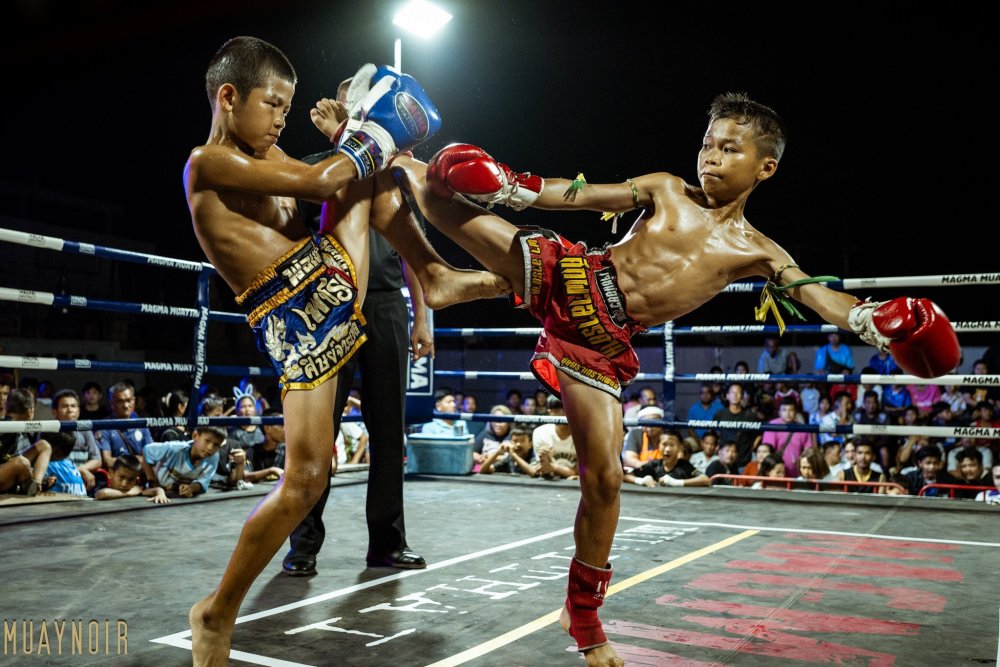

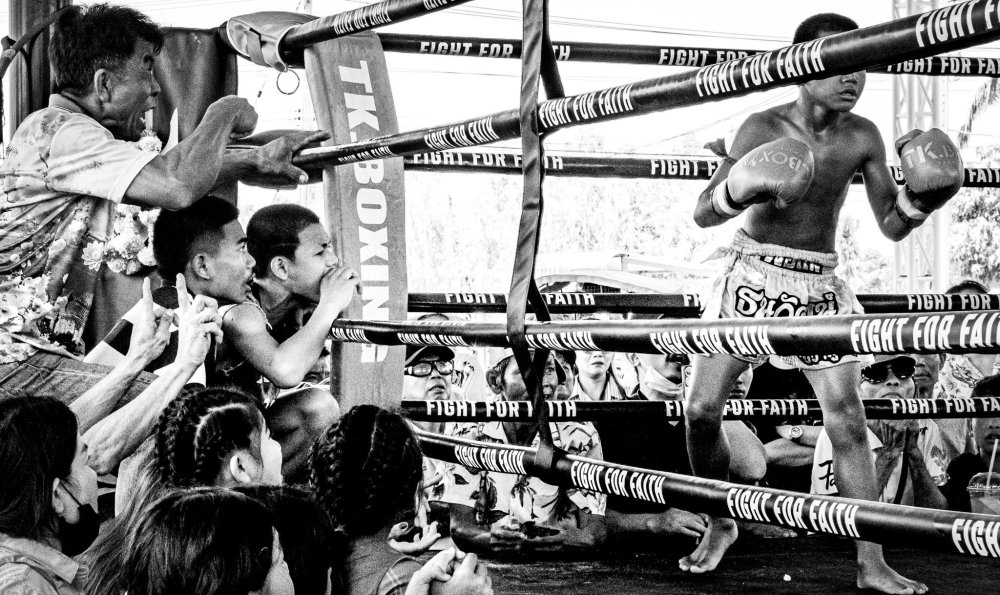
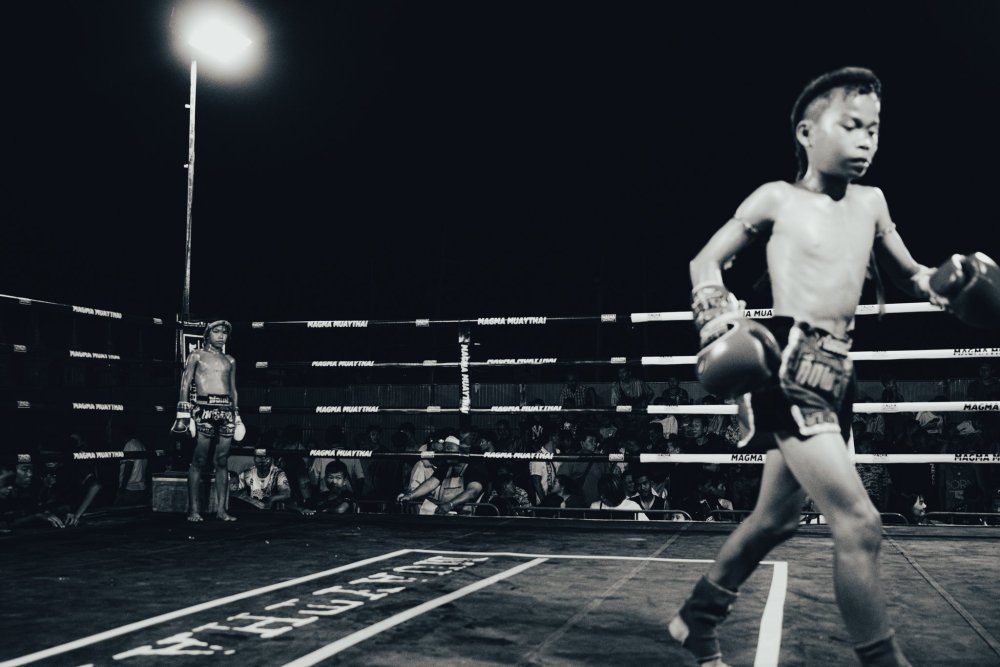
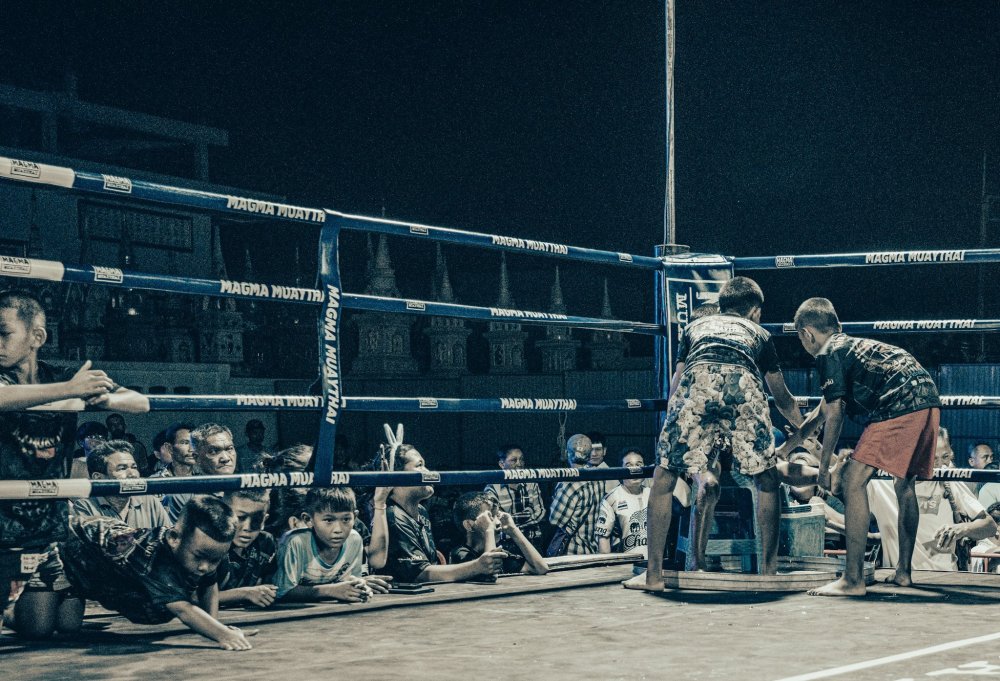
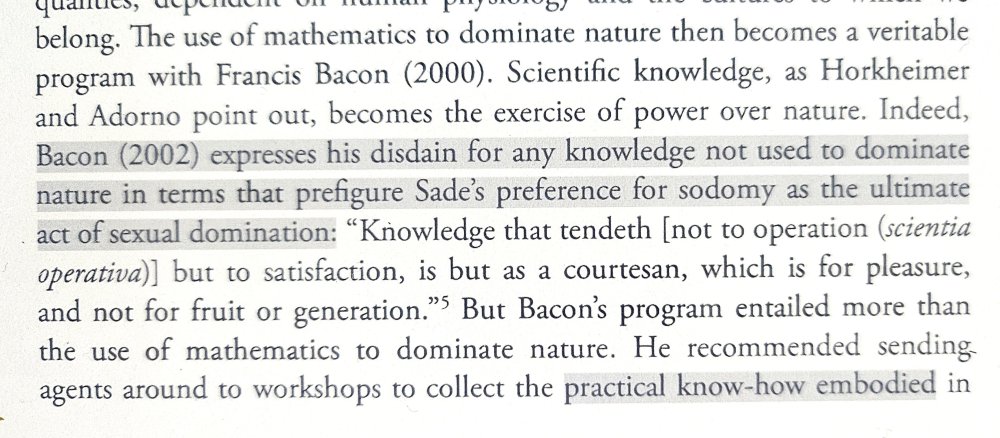
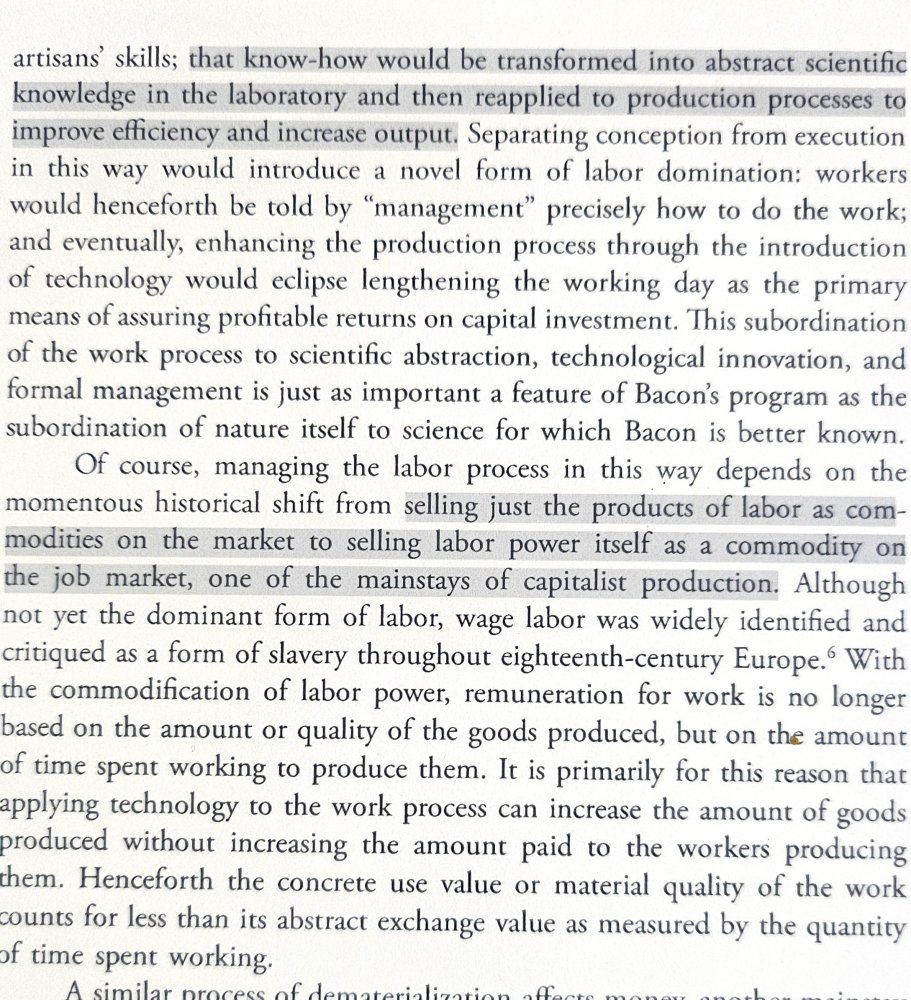
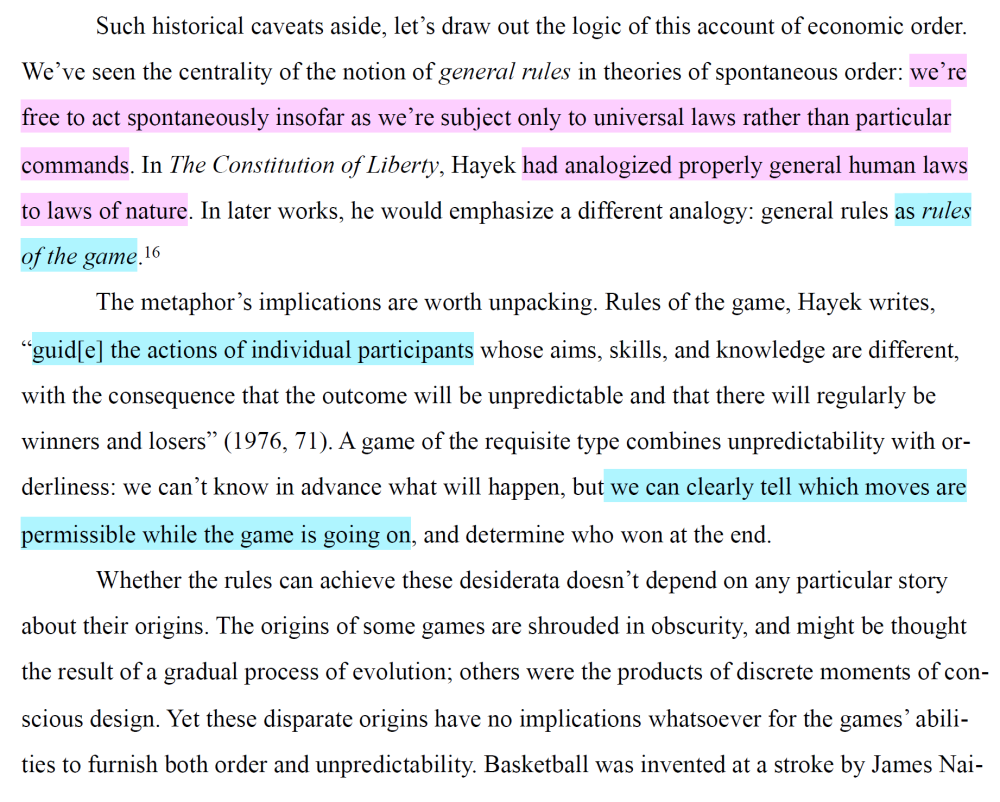


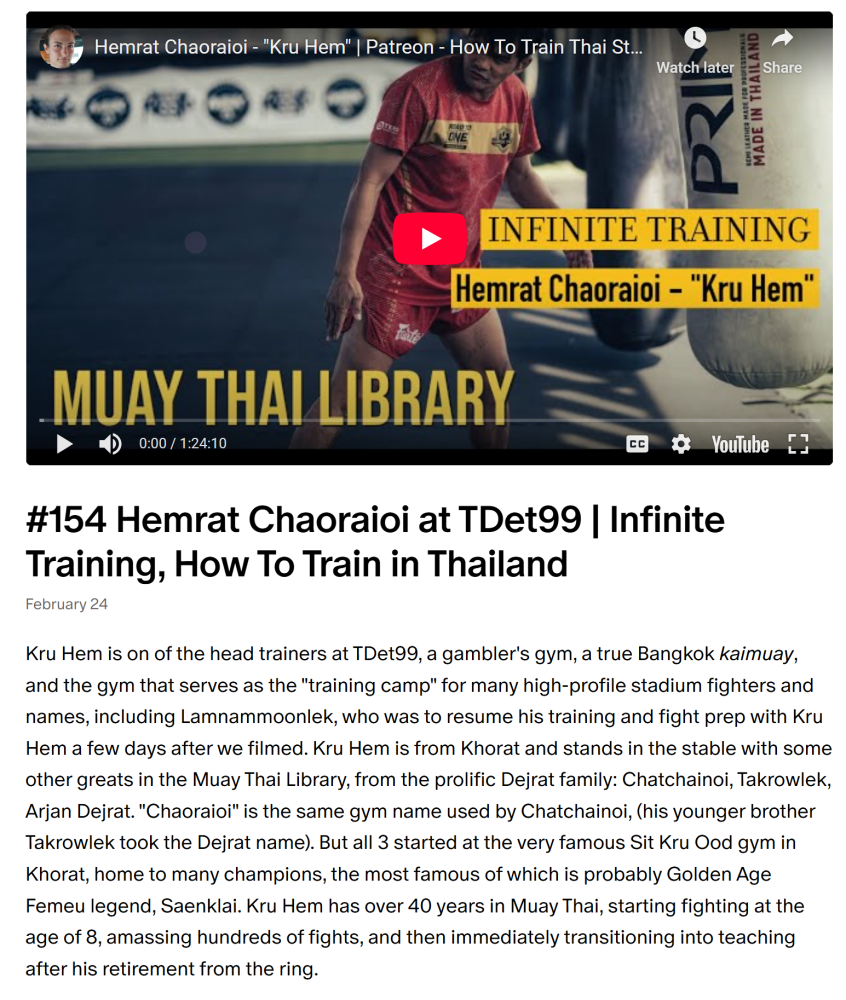
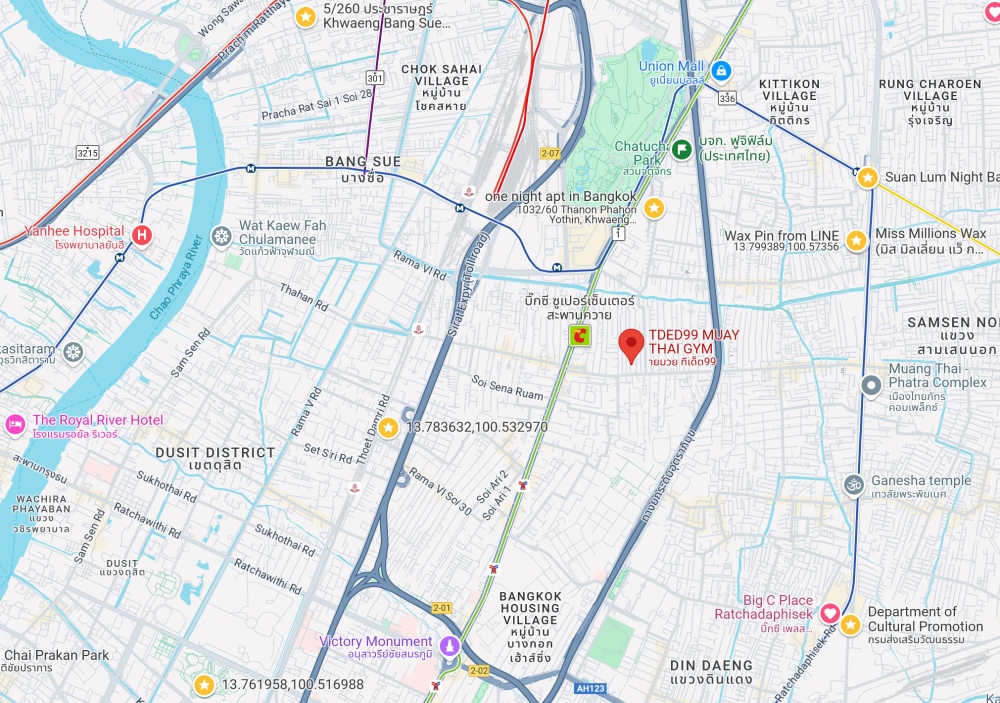
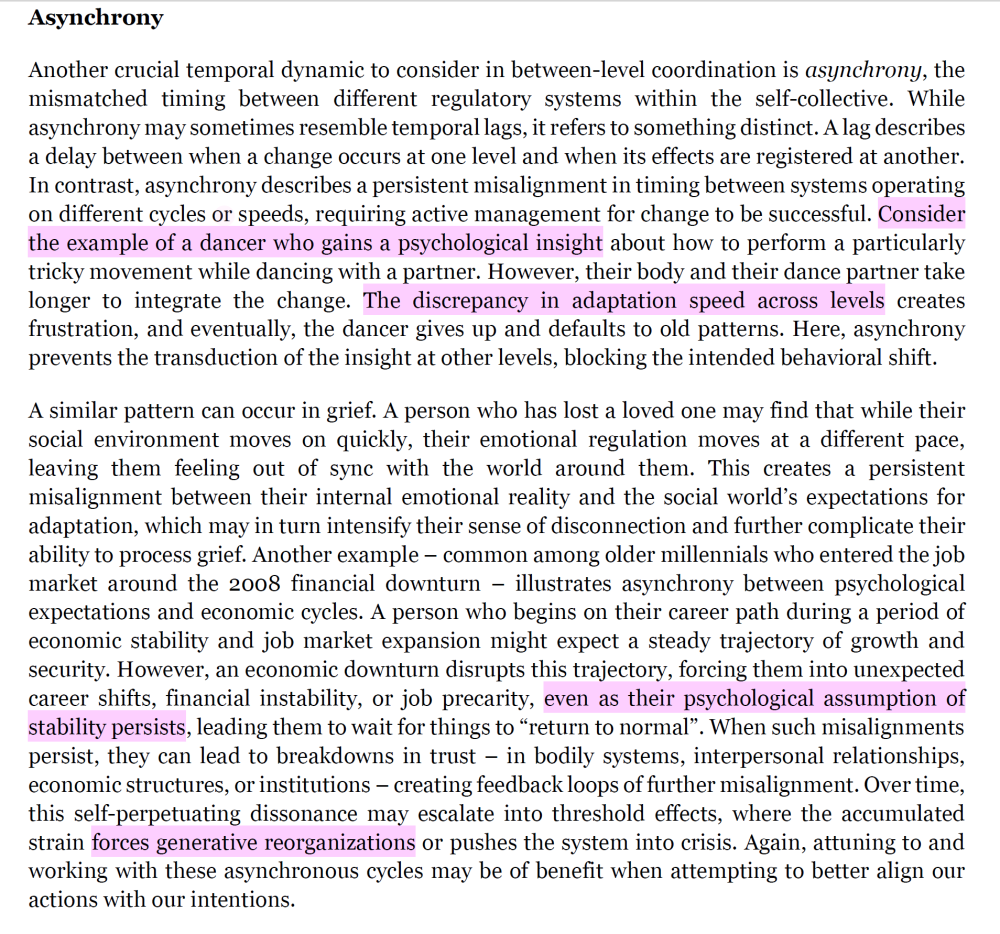
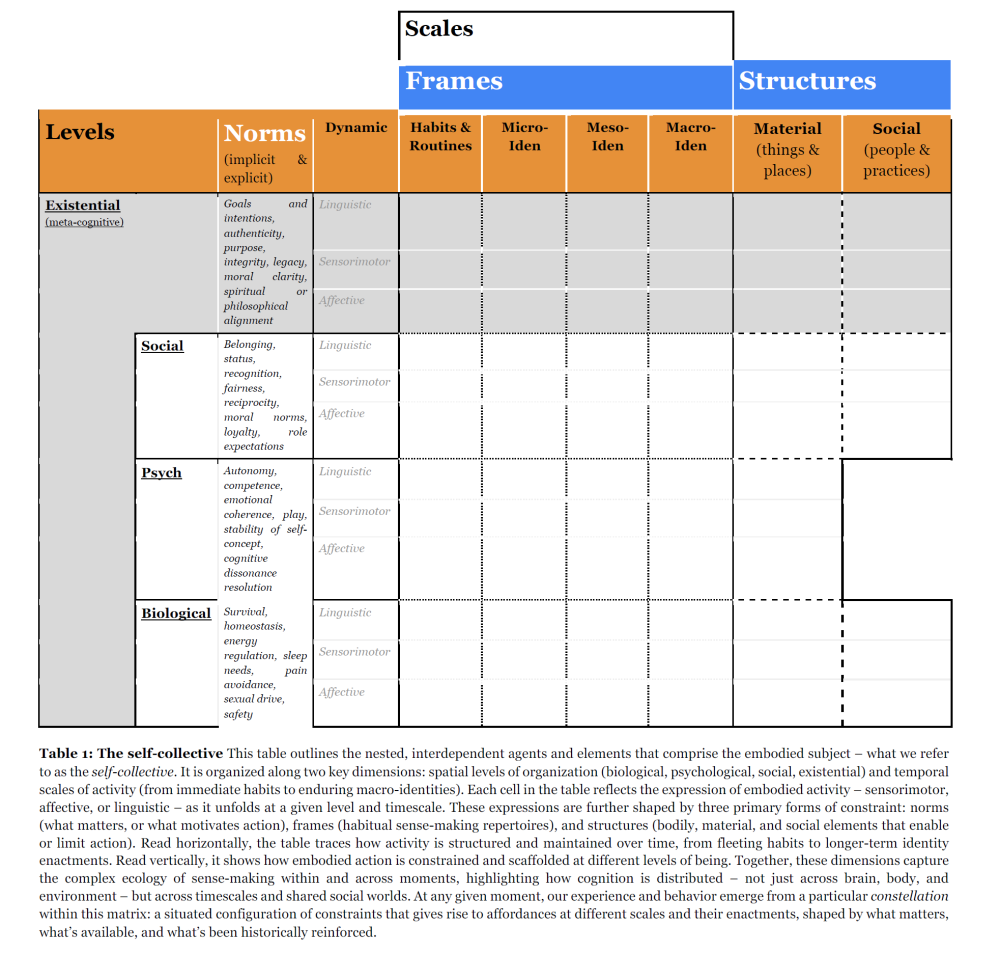


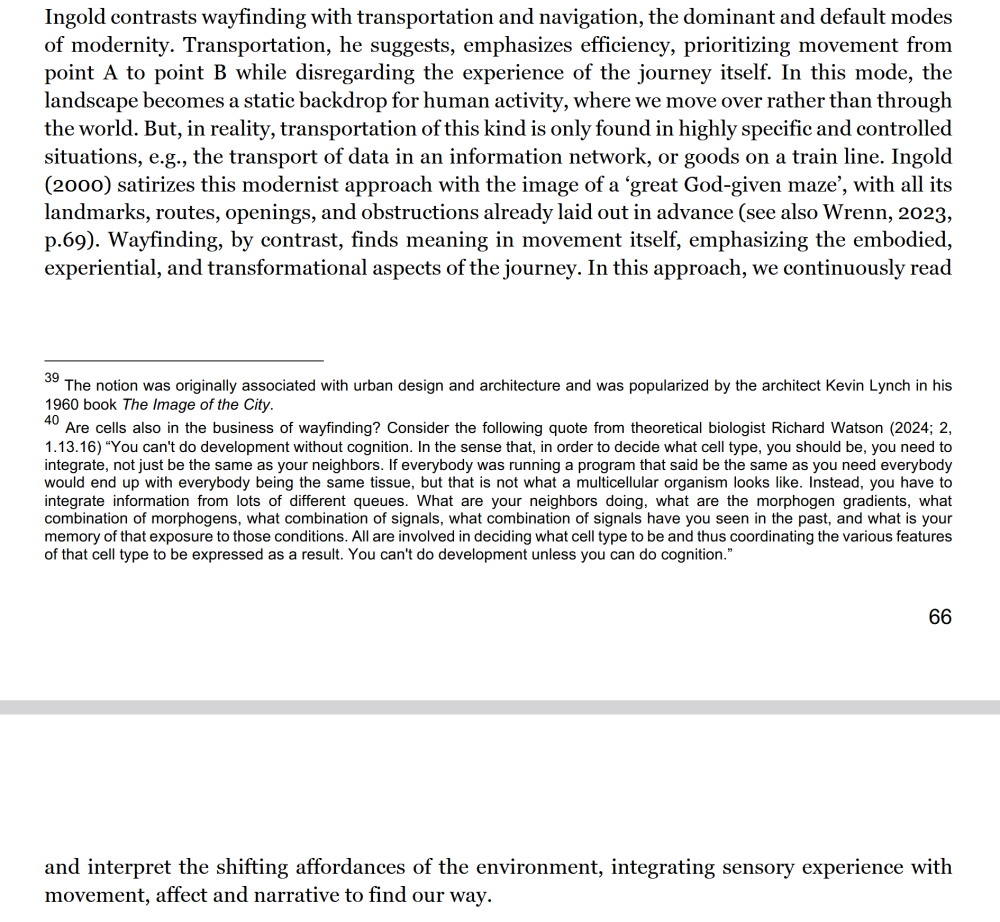

.thumb.png.13261730540de8cfcb0cb78aebad4022.png)
